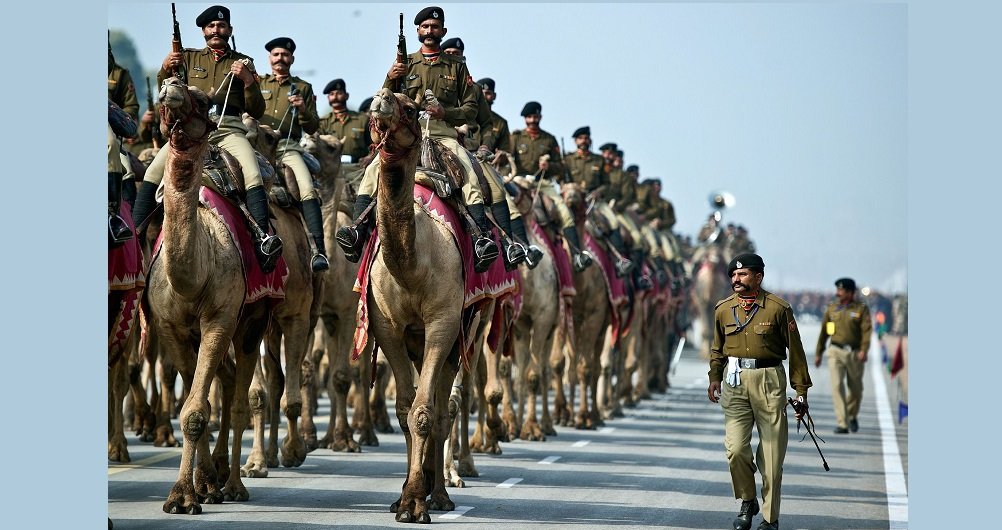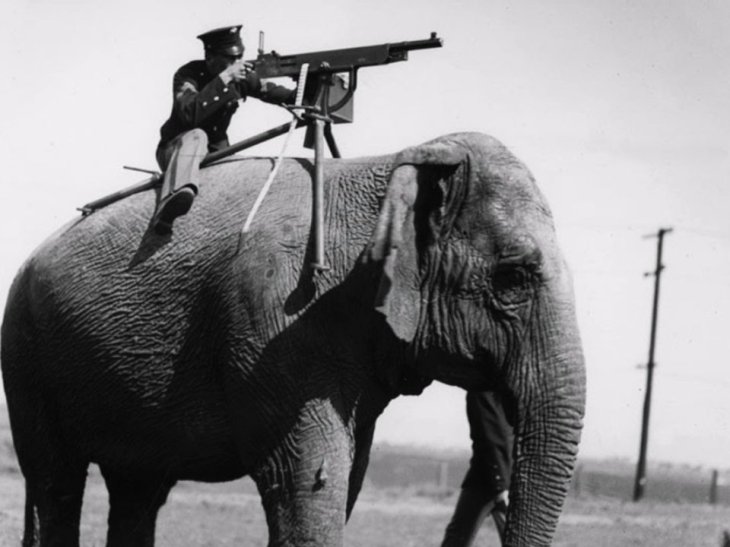10 Animals That Have Been Trained And Used In The Military (Part 1)
Harin - Jul 23, 2019

For a long time, animals have played an important role in warfare. Here are 10 great examples of how animals have been trained and used in the military.
- This AI Defense System Forces Drones To Land Autonomously
- China's New Suicide Drones Pose Dangers To Other Countries' Defense Systems
- North Korea Shows Off The World's Biggest Ballistic Missile Of Its Kind, Taking On The US
It was not until later that modern machinery was introduced, animals played an important role in warfare. With the masterful use of horses of the Mongols, Genghis Khan along with his generals could dominate the largest land ever known. Here are 10 great examples of how animals have been trained and used in the military.
War elephants

With their massive size and menacing tusks, elephants have long been used in the military ever since ancient times. India was the first country to incorporate in militaries elephantry units. But as time passed, other famous generals which included Hannibal, Alexander the Great and Pyrrhus of Epirus all deployed elephants to crush their enemies.
Normally, war elephants were placed at the center of the line. From there, the imposing beasts, at the speed of 20mph, would charge toward the enemy. Before the use of tanks and helicopters, the elephants were also used as a means of transporting heavy materials while traveling across difficult terrain.
Compared to a charging horse, the elephants with their articulate and muscular trunks could handle a spear wall.
During wartime, the sight of massive elephants charging forward was enough to cause enemies to flee in terror. The animal only became impractical before cannon fire.
Elephants were still used off the battlefield. In 1987, the animal was deployed to transport weaponry for the Iraqi troops for use in Kirkuk.
Mine-hunting dolphins

The US Navy began studying dolphins in 1960. Initially, the studies were only about how dolphins could be so hydrodynamic. The results of the studies could be used to improve torpedo performance.
However, seven years later, the US Navy Marine Mammal Program became an important project which is still ongoing at the moment. The program began putting dolphins in training for mine-hunting as well as force-protection missions.
For the mine-hunting purpose, the dolphins were trained to detect the location of underwater mines and then release buoys so that the Navy could clear the weapons safely.
During the 2003 Iraq War, such dolphin-involved operations helped clear more than 100 mines in the Umm Qasr port. Moreover, the program also trained dolphins to guard and protect harbors from enemy divers. If the dolphins detected a diver approaching, it would bump a buoy onto the back of the person so that they would be dragged to the surface.
According to the Navy:

Antitank dogs

The Russians were caught off guard after the Nazi betrayed the Soviets during World War II. In an attempt to stop the Nazi from entering their territory, the Soviets tried to train dogs on placing bombs in front of the enemies’ tanks before going back to their base safely.
When the training proved to be too difficult, the Soviets began tying bombs to the dogs. On the dog’s side, there was a pouch from which there was a small lever activating the bombs. When the dogs went under the tanks, the lever would come in contact with the tank’s chassis, leading to the bomb detonate.
As stated in the Soviet propaganda, by deploying this method, the Soviets destroyed about 300 German tanks. But in reality, the program was a failure. The training used Soviet diesel tanks while the tanks of the German army ran on gasoline. As a result, based on scent, the dogs tended to run toward Soviet vehicles.
The antitank dog program discontinued in 1996.
War pigs

In multiple ancient texts, pigs have been recorded as an effective counter-weapons against war elephants. Since war elephants were scared of the pigs’ squealing and charging, it was used by the Romans as well as Alexander the Great to fight enemies deploying war elephants.
In one brutal scenario which was noted in “Beasts of War” by Eglan:

Bat bombs

The US developed the bat bombs during World War II for use against Japan. In each bomb, there were 26 trays. Each of which held 40 hibernating bats. An incendiary device was attached to the bat. The device would explode after a certain amount of time.
The bombs were capable of deploying their own parachutes while giving the bats enough time to fly out. At that time, the plan of the US was to drop hundreds of bombs over Osaka Bay’s industrial cities.
Because the construction of Japanese cities back in the time used wood and paper, the combs would lead to fires, burning down large sections of the cities. Later, the US used the atomic bomb instead.
Featured Stories

Features - Dec 18, 2024
6 Cutting-Edge Features of Galaxy AI & Lineup of Supported Samsung Smartphones

Features - Jan 23, 2024
5 Apps Every Creative Artist Should Know About

Features - Jan 22, 2024
Bet365 India Review - Choosing the Right Platform for Online Betting

Features - Aug 15, 2023
Online Casinos as a Business Opportunity in India

Features - Aug 03, 2023
The Impact of Social Media on Online Sports Betting

Features - Jul 10, 2023
5 Most Richest Esports Players of All Time

Features - Jun 07, 2023
Is it safe to use a debit card for online gambling?

Features - May 20, 2023
Everything You Need to Know About the Wisconsin Car Bill of Sale

Features - Apr 27, 2023
How to Take Advantage of Guarantee Cashback in Online Bets

Features - Mar 08, 2023
Comments
Sort by Newest | Popular